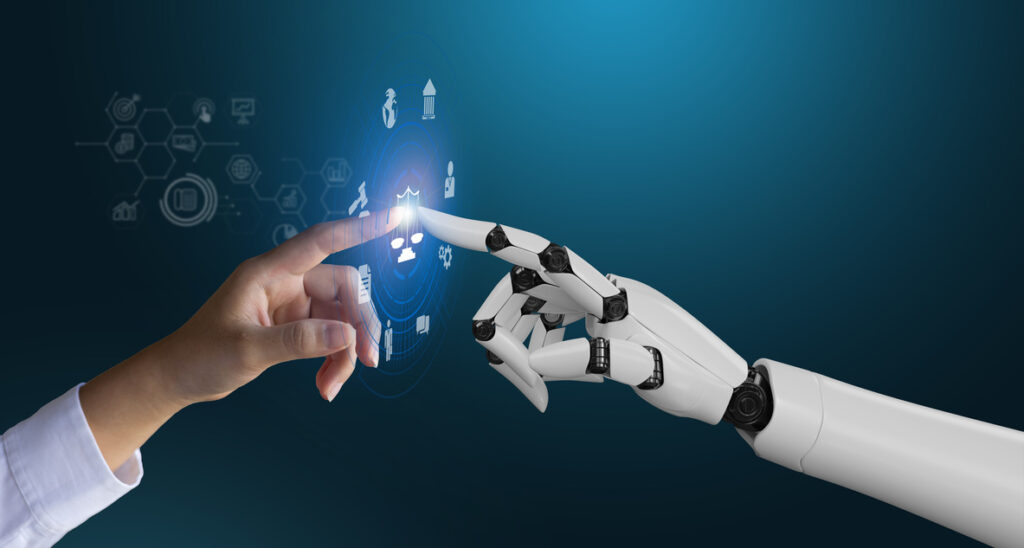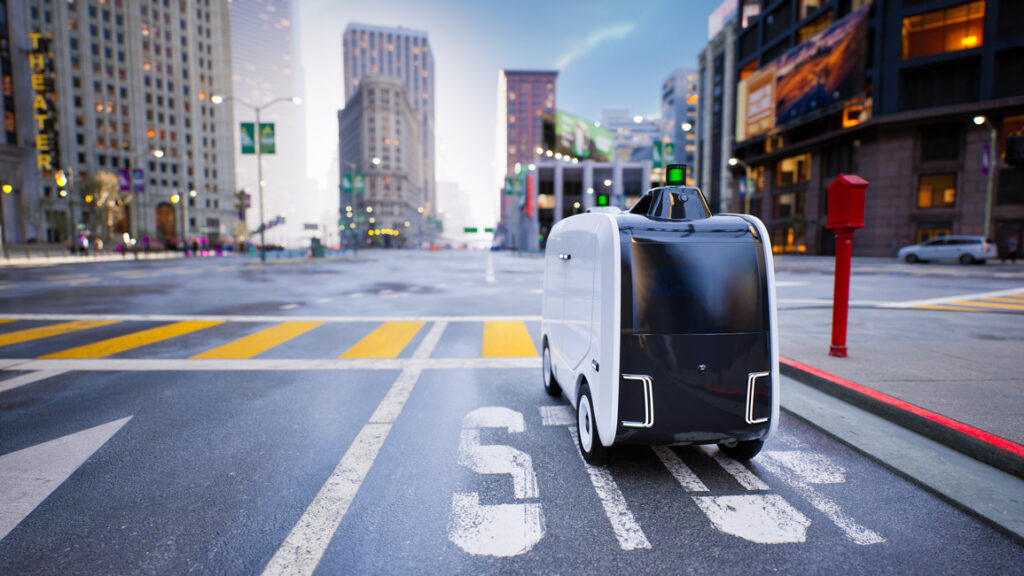
By Amy O’Brien, Group HR Director
Imagine you wake up in the year 2030. How will our evolving workforce have impacted the performance chemical and personal care industries?
Today, we are living in an age of major scientific advancement. As our understanding of medicine and science continues to progress, global populations are living longer, while technologies such as AI and machine learning are having an ever-growing effect on our lives.
In the performance chemical and personal care industries, this is already having an impact on our workforce. With birth rates dropping across the globe and average population ages rising, technology and generational shifts are starting to change the face of our workplaces and present new challenges. Looking ahead, this phenomenon is only likely to accelerate. Japan is a key case study of this effect, with the world’s second-highest proportion of people aged 65 and over, after the small state of Monaco.1 Here, industry leaders are already developing strategies to accommodate these shifts.
So what could this look like in 2030? To find out, let’s take a closer look into the future of the performance chemical and personal care industries.
It’s Generational
For people across the world, the Covid-19 pandemic transformed how we view our workplaces, as well as our perception of work in our lives. Over the course of multiple lockdowns, many companies and employees across the globe became aware of the ease with which many office-based jobs could exist remotely. Having experienced more fluid working arrangements, younger generations are placing greater value on flexibility, causing waves within traditional workplaces.2, 3
Another benefit of attracting young talent is their eagerness to learn and adapt to the constantly evolving workplace. As the journey of discovery and change continues, there will always be shifts in ideas, roadblocks to success, and lessons to learn along the way. By employing progressive and malleable individuals, companies can ensure that their staff are not only motivated and encouraged by business activity but are also willing to embrace these challenges with open arms.
In the future, it will be necessary for companies to adapt their policies, processes, and technologies to procure the talents of a younger generational workforce. By prioritising the flexibility that younger generations demand, workplaces will be able to attract younger employees into these sectors.

Retaining and Retraining
However, this thinking-outside-the-box mentality goes beyond location and working hours. Research suggests that younger employees tend to be more idealistic, meaning that their jobs need to be more closely aligned with their morals to bring them fulfilment. Consequently, as Gen Z and younger generations move into the workplace, acquiring and retaining their talents is also likely to be challenging. Diversity and inclusion are already key considerations and ones which are vital for HR teams to promote, but companies are feeling the growing need to provide better transparency on these issues to win over younger employees.4, 5
Meanwhile, as workforces continue to age, strategies will need to be implemented to retain older staff and leverage their talents. There’s a growing need to establish HR initiatives to make full use of the benefits that more experienced individuals offer, while ensuring that they still feel valued in a rapidly changing working culture.6
Technological advances have the capacity to help maximise employees’ potential. For example, AI and machine learning technologies could be used to aid staff in repetitive tasks, increasing time for more creative thinking or innovation, therefore fulfilment for older employees in the workplace. However, as these technologies start to replace certain aspects of existing job roles, it will be crucial for companies to ensure that they are utilised in a way that still maximises empowerment and enjoyment. By educating employees on the role AI will play in the future, retraining and upskilling existing staff, and providing more opportunities for personal development, companies can adapt and create dynamic and enjoyable working environments.

How will this impact our industries?
In our first Innovation in Industry blog, we explored how technology will play a part in the evolving work landscape. Following on from this, and as touched on above, increased automation will likely change the nature of human-centric job roles. A large proportion of the performance chemicals industry relies on warehouse and logistical employees. Typically, these have been seen as less glamorous roles, owing to their manual nature.
In areas where it is possible that a degree of both AI and manual labour could merge, we could observe AI reducing human involvement in specific tasks. One example of this is self-driving vehicles, also known as autonomous vehicles (AV), which are robotic machines capable of driving without human input.7 These systems have the potential to autonomise the transportation of goods, reducing reliance on humans and increasing safety. Moreover, key operating areas for the distribution industry, such as warehouse yards, airports and sea ports, are typically subject to less rigorous regulations than public rights of way, meaning that self-driving technologies could be implemented more quickly in these areas.8 AV technologies could therefore transform the distribution sector by closing existing labour gaps and boosting efficiency.8
AI integration could also allow performance chemical and personal care NPD managers to enhance processes. Companies have been leveraging product lifecycle management (PLM) systems and automated laboratory equipment, for example, to increase productivity while maintaining a high degree of experimental accuracy during development and formulation. Again, by utilising AI or automated tools, these individuals can free up more time from creative thinking and experimentation, which could lead to greater innovation in both industries.
However, not all manual roles will be easily replaced by AI. Most processes will likely always require a human quality check, and current AI technologies still display a range of weaknesses, including in complex strategic planning, work requiring complex hand-eye coordination, and handling unknown spaces.9 As AI is increasingly applied to new and complex tasks, human supervision will be more important than ever. Moreover, it is important to note that, while AI has the potential to replace humans in many jobs, it is also likely to create millions of new ones.9 In addition, human interaction is often still needed in order to ask the AI the right question or input the correct commands.
In the future, the demand for labour in robotics and software engineering, for example, is likely to rapidly increase.9 Here, human-centricity is all-important, and companies will need to find ways to empower employees in these roles.10,11 Therefore, it will be important for companies to implement measures which promote a healthy working environment and make warehouse and logistical roles more appealing.
Securing Sustainability
With the climate crisis ongoing, sustainability remains a central issue for people everywhere. However, as Gen Z and younger, more conscious generations seek a direct alignment between their jobs and their moral principles, promoting sustainability in the workplace will be of paramount importance. In the personal care and performance chemical industries, increased process efficiency, including waste reduction and product recycling, will likely be aided by technological developments. However, as we explored in a previous blog, the distribution sector has not historically been seen as the most environmentally friendly, and, as such, the industry will have to work to make the sector – and therefore jobs – greener. Looking ahead, companies across the personal care and performance chemical sectors must collaborate to bring about meaningful change.

How is Cornelius looking to adapt to these challenges?
Cornelius is committed to facilitating change in order to maximise the potential of its employees. By introducing different engagement activities, such as social events and group health sessions, Cornelius promotes a healthy work/life balance, ultimately promoting a positive and empowering working environment. These activities are adapted for the changing workforce, with greater accessibility to online services. Additionally, our hybrid, smarter working system also maximises time efficiency, meeting a wide range of employee needs by enabling remote working. Employee training is another area of focus. At Cornelius, we invest in our employees through our online learning platform, allowing people to continue developing in areas that are important to them.
We recognise that the world is changing and know how important it is to ensure that our employees feel heard. Our employee-led teams take part in discussions on a range of issues, from environmental and wellbeing challenges to charity and community support strategies. Within our One Cornelius roadmap, we also run an annual programme of events, celebrating the work of our teams and promoting activities in line with our values. This includes diversity and inclusion topics such as events focused on bringing one’s whole self to work and celebrating the differences that make our employees unique. Looking ahead, we are excited to continue to implement new practices to ensure that we are meeting the needs of both our growing employees and the rapidly changing industry.

Looking Ahead
Though the future is uncertain, the challenges facing the performance chemical and personal care sectors are clear. Populations are ageing. Workforces are getting older. And technology is changing how workforces operate.
In order to overcome these difficulties, companies need to look at how they can attract and retain talent. It will also be integral for companies to reassess the wants and needs of future staff, as well as maintain a welcoming and inclusive atmosphere for existing, ageing employees. Businesses will also need to start thinking about how certain job roles may begin to shift with the adoption of automated technologies and how that will impact individual roles and responsibilities. Mapping these changes early ensure that employers can stay ahead of the curve and provide the right training and support to their staff. Moreover, by meeting the younger generations’ demands for flexibility and incentives within their roles, businesses can recruit new talent and take advantage of the invaluable skillset of these employees. However, workforces are only one factor driving change in the performance chemical and personal care sectors.
What do you think they will look like in 2030? Watch this space for further articles exploring the future of these industries.
References
- Guardian. (2023). Japan’s ageing population poses urgent risk to society, says PM. [Online]. Guardian. Available at: https://www.theguardian.com/world/2023/jan/23/japans-ageing-population-poses-urgent-risk-to-society-says-pm [Accessed June 2023].
- McKinsey & Company. (2021). The future of work after COVID-19. [Online]. McKinsey & Company. Available at: https://www.mckinsey.com/featured-insights/future-of-work/the-future-of-work-after-covid-19 [Accessed June 2023].
- Deloitte. (2023). Understanding Generation Z in the workplace. [Online]. Deloitte. Available at: https://www2.deloitte.com/us/en/pages/consumer-business/articles/understanding-generation-z-in-the-workplace.html [Accessed June 2023].
- Stahl, A. (2021). How Gen-Z Is Bringing A Fresh Perspective To The World Of Work. [Online]. Forbes. Available at: https://www.forbes.com/sites/ashleystahl/2021/05/04/how-gen-z-is-bringing-a-fresh-perspective-to-the-world-of-work/?sh=703c361510c2 [Accessed June 2023].
- ThoughtExchange. (2022). ThoughtExchange Releases “Gen Z at Work” Research Report. [Online]. ThoughtExchange. Available at: https://thoughtexchange.com/news/thoughtexchange-releases-gen-z-at-work-research-report/ [Accessed June 2023].
- Stirpe, L. et al. (2018). Retaining an ageing workforce: The effects of high-performance work systems and flexible health programmes. [Online]. Wiley. Available at: https://onlinelibrary.wiley.com/doi/abs/10.1111/1748-8583.12205 [Accessed June 2023].
- McKinsey & Company. (2023). Autonomous driving’s future: Convenient and connected. [Online]. McKinsey & Company. Available at: https://www.mckinsey.com/industries/automotive-and-assembly/our-insights/autonomous-drivings-future-convenient-and-connected [Accessed June 2023].
- DHL. (2023). Outdoor autonomous vehicles. [Online]. DHL. Available at: https://www.dhl.com/global-en/home/insights-and-innovation/thought-leadership/trend-reports/autonomous-vehicles-logistics.html [Accessed June 2023].
- Thomas, M. (2023). Robots and AI Taking Over Jobs: What to Know About the Future of Jobs. [Online]. Built In. Available at: https://builtin.com/artificial-intelligence/ai-replacing-jobs-creating-jobs [Accessed June 2023].
- Skoropad, M. (2021). How to Attract Talent to Warehouse Roles in Your Company. [Online]. ShipBob. Available at: https://www.shipbob.com/uk/blog/warehouse-roles-to-hire/ [Accessed June 2023].
- warehouse.ninja. (2022). How to Recruit and Retain Warehouse Employees in 2023. [Online]. Available at: https://warehouse.ninja/how-to-recruit-and-retain-warehouse-employees/ [Accessed June 2023].